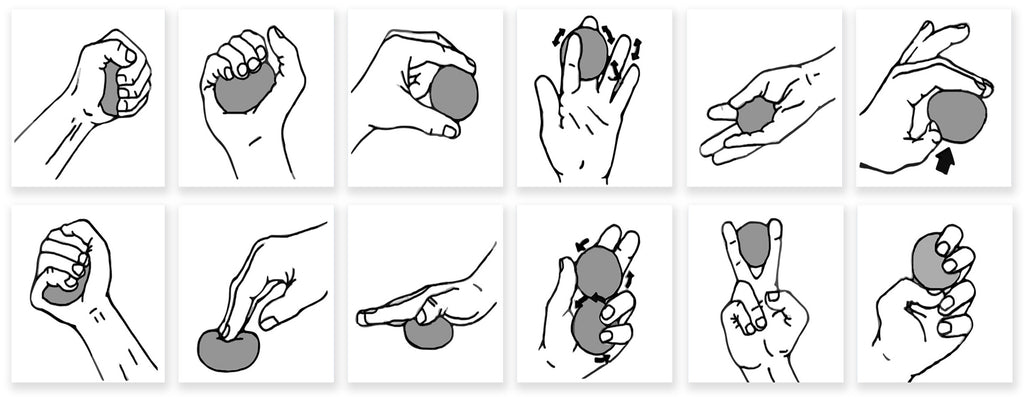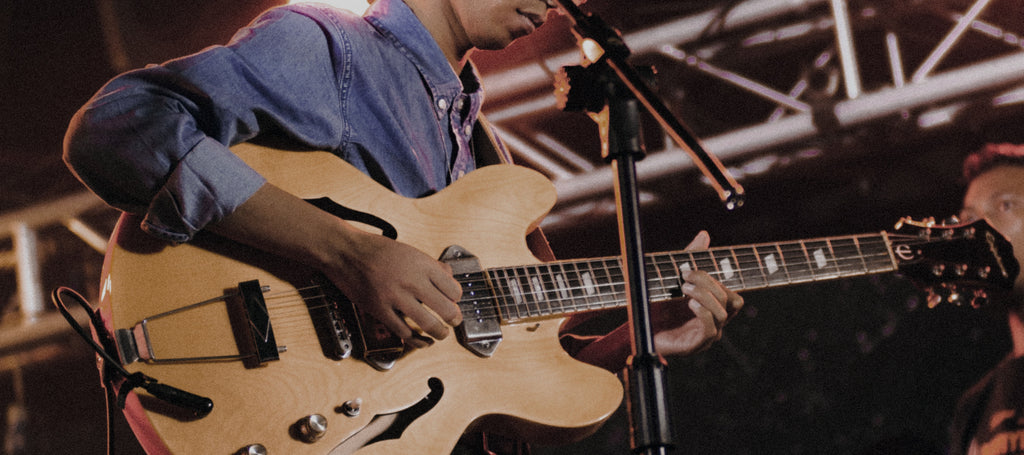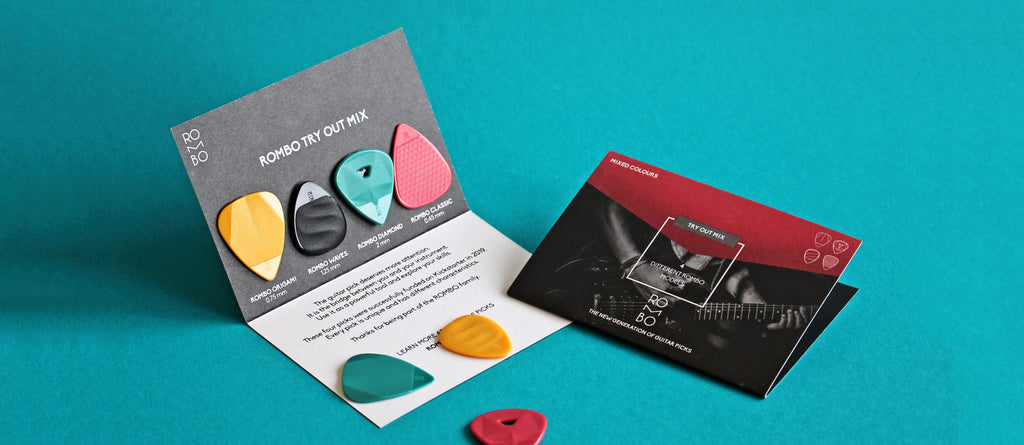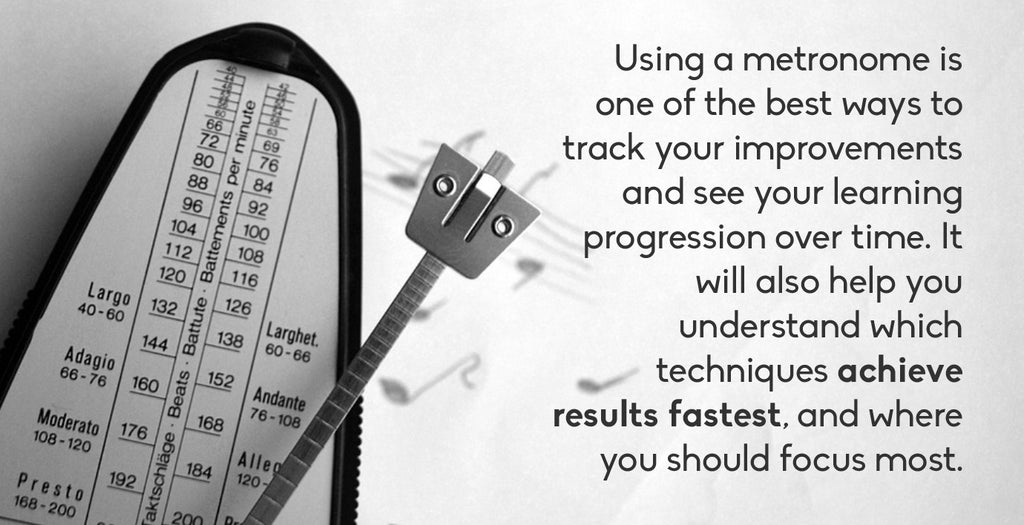As a guitarist, you experience a very steep learning curve during the first months and years of your journey. All you need are an instrument, a guitar pick and a few songs to learn. Happy days.
Then you hit a wall that slows down the learning process.
You want to sound like those guitar idols of yours who inspired you to buy your first guitar. Further still, you want to create your own sound.

Increasing your picking speed is a long journey full of ups and downs, obstacles and victories, and moments of personal fulfillment. Speed at guitar is a skill that requires patience and plenty of hard work.
The number of hours of practice is important. However, understanding the “right” way of practicing is the key to upgrading your skills.
If you are struggling to play something at the desired speed, it only means you have not defined a sufficiently effective practice routine.
For those looking to improve their guitar playing speed, the following insights will help get you where you want to be:
Alternate picking is the most common guitar pick technique.
With the pick between your thumb and index finger and pointed toward the strings, you use strictly alternating down and up strokes.
Use the 45-degree rule from the picture. Simultaneously, rotate your thumb 45 degrees downwards. The guitar pick will glide very well and won't get stuck.

Every muscle is connected. Your hands, wrists, forearms, shoulders and back should all be performing their best during your practice.
Playing guitar can cause fatigue to these areas, and stretching helps to keep muscles loose and limber. It increases flexibility and your range of motion. Stretching before playing guitar will warm up muscle tissues and joints.
Playing faster will cause some areas to tense up. Try to be aware of all these areas and recognize where you should stay relaxed.
Finding the right balance between tension and relaxation will help you achieve greater accuracy and speed. It will also improve the way you hold your guitar pick.
Personally, I like to do some exercises with a ball before playing:

I also have some warm-up guitar scales and arpeggios, which I play every day for the first 5–10 minutes, and which include a variety of guitar techniques.
It is not only the motion of the thumb and index finger that will affect the way you play guitar. The muscles around your wrist are structured in a way to naturally promote back-and-forth movements.
Use them to play more efficiently, and to dissipate the fatigue in your fingers. This technique, combined with the 45-degree guitar pick rule, will achieve the fastest results at the beginning.
Many players focus too much attention on their fretting hand. In order to play at higher speeds, it is essential to make both your hands work with equal efficiency and strength.
To establish the skill level of each hand, play through a passage with the picking hand only, then play the same notes with the fretting hand only. You will probably find that one hand is at least 20% faster than the other.
Now you know which hand is not working efficiently enough. Your goal is to get a deviation of less than 3% between both hands.

Here are some reasons for there being such a huge variety of guitar picks available on the market:
Don’t overlook these factors, and don’t be afraid to try a large variety of guitar picks until you have found the right one for every style you play.

For guitar speed exercises, you should start with 1mm as a reference and then decide if this guitar pick thickness is enough. Thin, flexible picks take too much time to relax after hitting a note.
We created a four-step guide to choosing your guitar pick, which you can find here:
https://rombopicks.com/blogs/insight-rombo/how-to-choose-the-right-guitar-pick
Speed is futile when you are playing without accuracy. The ability to play guitar in time at high speed is one of the most difficult skills to achieve.
Try to use a metronome and play fast, but also use slow tempos and increase your accuracy for different guitar techniques.
Using a metronome is one of the best ways to track your improvements and see your learning progression over time. It will also help you understand which techniques achieve results fastest, and where you should focus most.
After a while, you will learn to play in time without using a metronome because you will assimilate the feeling of playing in time naturally.

Study both hands, analyze your position, reflect after each session and find your weaknesses. What doesn’t it work the way it should? Do you know why?
Ask yourself many questions and be critical of yourself. Create a scale and analyze every guitar technique to know where you stand on any particular exercise, and track your progress:
Create a guitar diary with notes and observations. If some techniques, songs or even specific fingers are too weak to speed up, be creative and create an exercise to encourage improvement in these areas.
Use technology to track your guitar learning progress. Record yourself while playing guitar, observe your posture and try to identify areas with too much tension. You can compare these with videos of professional players and find out which areas you should work on. Then, take corrective action if needed.

Don’t focus on just one technique at once. This approach will help you to improve isolated techniques, but most songs and solos combine different techniques that work fluently together in a song.
Focusing on only one technique might cause your guitar to sound unnatural and choppy.

Try to combine different techniques in 20-minute intervals. You also need to specifically practice different techniques together in the same way you will use them in real songs.
The extra advantage of this is that it will also help you produce richer compositions when you reach the point of creating your own songs.
There is much you can do to speed up your skills on the guitar. Nevertheless, you must remember to be patient and accept that some processes reach a limit and cannot be rushed.
Developing patience is the most important skill for avoiding frustration at guitar. Remember that being a guitarist is a never-ending process. You will always struggle with new techniques and have ups and downs.
Question everything to find new paths and become a very expressive musician.
For example: are you using the right material for your guitar pick?
Find out here:
https://rombopicks.com/blogs/insight-rombo/guitar-pick-materials-at-rombo
25. April 2020
Hey!!
The part with the warm up exercises is amazing!
Please more content like that!
Do you guys deliver to Norway?
Thanks!
Comments will be approved before showing up.
Sign up to get the latest on sales, new releases and more…
By signing up you agree to our privacy policy.
© 2025 ROMBO.
registered brand
Powered by Shopify
Anonymous
25. April 2020
Hello P-Jane!
Thanks a lot for the comment. I am glad you can use this information :)
To your question → Yes! We ship to Norway. I think you probably found out, since we have an order from Norway for the same E-Mail address ;P
Have a nice day!